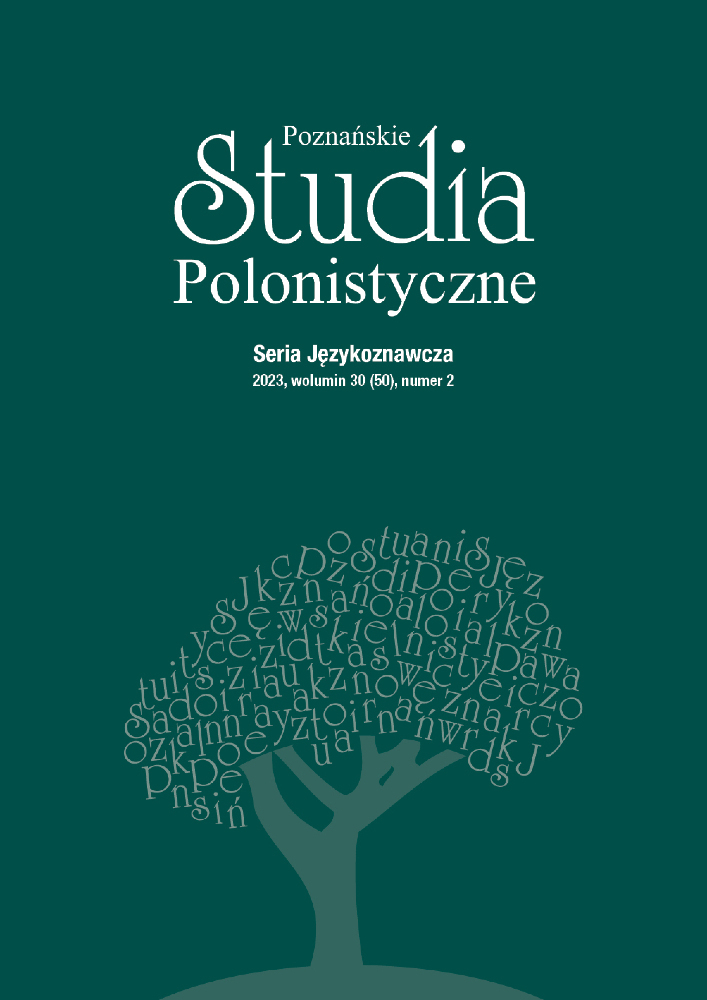Neologizmy słowotwórcze
w Obserwatorium Językowym Uniwersytetu Warszawskiego
(na materiale haseł opracowanych do lutego 2022 roku).
Część 2: Substantywne derywaty złożone
Polish Derivational Neologisms in Obserwatorium Językowym Uniwersytetu Warszawskiego
(Language Observatory of the University of Warsaw) (Based on Entries Compiled
by the End of February 2022).
Part 2: Substantival Compounds
Author(s): Mateusz RybarskiSubject(s): Lexis, Sociolinguistics
Published by: Uniwersytet Adama Mickiewicza
Keywords: contemporary Polish language; word formation; derivational neologisms; parts of compounds; Obserwatorium Językowe Uniwersytetu Warszawskiego;
Summary/Abstract: This article constitutes the second partof a series of papers devoted to 1117 Polish deriva-tional neologisms in Obserwatorium Językowe Uni-wersytetu Warszawskiego (Language Obserwatory ofthe University of Warsaw). Its aim is to present andanalyse 334 new substantival compounds in the Pol-ish language. The author divides them into groupsof derivational neologisms created by the use of thesame formative technique and containing the samepart of the compound. The study concludes that thebiggest class of the described new substantival com-pounds in contemporary Polish language consistsof structures without any affixes. As for the mor-phemes used to create them, the interfix -o- turnedout to be the most productive. Most of them con-tain the elements e- (abbreviated adjective elektro-niczny [electronic]) and -mat (abbreviated nounautomat).
Journal: Poznańskie Studia Polonistyczne. Seria Językoznawcza
- Issue Year: 31/2024
- Issue No: 1
- Page Range: 205-217
- Page Count: 13
- Language: Polish

